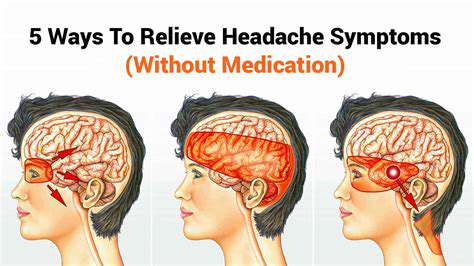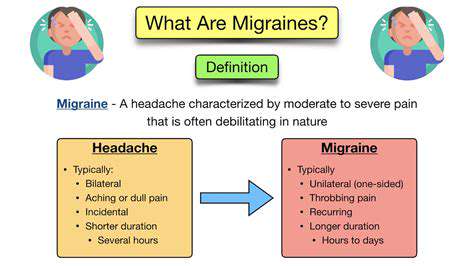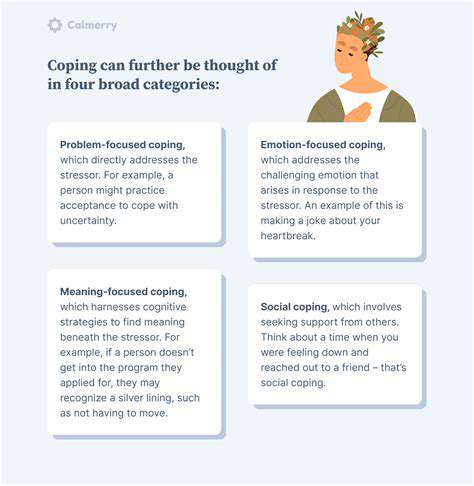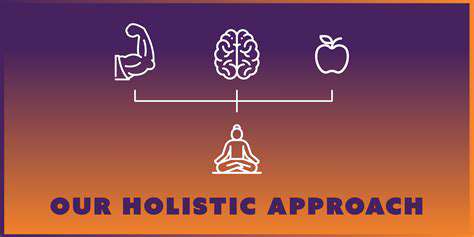Caffeine Withdrawal Headaches: How to Cope
Proper hydration is crucial for overall health and plays a significant role in managing caffeine withdrawal symptoms. Dehydration can amplify headaches, fatigue, and other unpleasant side effects when quitting caffeine. During withdrawal, your body craves adequate fluids to support natural detoxification, helping flush out toxins and replenish electrolytes lost through perspiration. Maintaining optimal hydration ensures your body functions smoothly, easing the transition away from caffeine dependence.
Consistent water intake throughout the day, particularly during early withdrawal stages, can dramatically lessen headache severity and duration. Aim for at least eight glasses daily, increasing if physically active or experiencing unusual thirst.
Dietary Considerations for a Smooth Withdrawal
A nutrient-dense diet supports the body's natural detox processes during caffeine withdrawal. Prioritizing whole, unprocessed foods delivers essential vitamins and minerals that combat symptoms. Incorporate colorful fruits, vegetables, and lean proteins to provide the nutritional foundation your body needs to weather withdrawal effectively.
Magnesium-rich foods like spinach, almonds, and pumpkin seeds prove particularly valuable during this period. Magnesium aids muscle relaxation and nerve function, directly counteracting withdrawal-related headaches and tension. Complex carbohydrates from whole grains offer sustained energy, preventing the crashes that often accompany reduced caffeine intake.
Electrolyte Balance: A Key Component
Since caffeine acts as a natural diuretic, withdrawal often creates electrolyte imbalances that exacerbate symptoms. Strategic food choices can restore this delicate balance. Potassium-packed bananas, sodium-rich celery, and magnesium-loaded avocados all help replenish what caffeine depletion removes.
While electrolyte supplements may help, consult a healthcare provider before use, especially with pre-existing conditions. Coconut water serves as an excellent natural alternative, providing balanced electrolytes without artificial additives.
The Role of Nutrient-Rich Foods
Certain powerhouse foods specifically target withdrawal symptoms. B vitamin sources like lentils, eggs, and nutritional yeast support neurological function during this challenging transition. These nutrients help maintain cognitive clarity when caffeine's stimulant effects fade.
Antioxidant-rich berries and dark leafy greens combat the oxidative stress that contributes to withdrawal headaches. Their anti-inflammatory properties provide natural relief while supporting overall cellular health during detoxification.
Mindful Eating and Hydration Habits
Developing intentional consumption patterns significantly impacts withdrawal success. Tune into your body's hunger and thirst signals rather than following arbitrary schedules. Avoid processed sugars that create energy rollercoasters mimicking caffeine withdrawal symptoms.
Small, frequent meals maintain stable blood sugar, while consistent water sipping prevents dehydration headaches. Carry a reusable water bottle and set reminders if needed to establish this crucial habit during withdrawal.
Your goals should evolve as you move through different life stages. Early career priorities might include building an emergency fund and improving credit scores, while mid-career focuses often shift toward retirement savings and college funds for children.

Seeking Professional Guidance When Needed
Understanding Caffeine Withdrawal Headaches
Caffeine withdrawal headaches represent the brain's adjustment to altered blood flow patterns after caffeine reduction. These typically manifest as pulsating pain radiating from the temples, often accompanied by brain fog and irritability. Recognizing these as temporary neurological recalibrations rather than true medical emergencies helps maintain perspective during withdrawal.
Identifying the Triggers
Beyond simple caffeine absence, multiple factors influence headache severity. Stress hormones, sleep pattern disruptions, and even weather changes can amplify symptoms. Keeping a symptom journal helps identify personal triggers and optimal management strategies.
Managing the Intensity of Pain
Pain management should prioritize natural methods before medication. Cold compresses, acupressure, and peppermint oil applications often provide surprising relief. For severe cases, consult a doctor about appropriate OTC medications, being mindful of rebound headaches from overuse.
Lifestyle Adjustments for Support
Syncing with natural circadian rhythms proves invaluable during withdrawal. Morning sunlight exposure regulates cortisol, while evening digital detox promotes melatonin production. Gentle exercise like yoga or walking boosts endorphins that naturally counteract withdrawal discomfort.
Seeking Professional Medical Advice
Consult a healthcare provider if headaches persist beyond two weeks or intensify unexpectedly. This ensures proper differentiation from migraines or other neurological conditions requiring specialized treatment. Blood pressure monitoring is particularly important during caffeine reduction.
Alternative Approaches to Consider
Complementary therapies like acupuncture or chiropractic care may offer relief when traditional methods fall short. Herbal teas containing ginger or chamomile provide gentle support, though always verify interactions with existing medications.
Long-Term Strategies for Prevention
The most sustainable approach involves gradual caffeine reduction paired with lifestyle upgrades. Replace coffee rituals with equally rewarding alternatives like herbal tea ceremonies or matcha preparation. Building stress resilience through meditation or breathwork prevents future dependence on stimulants for energy management.







